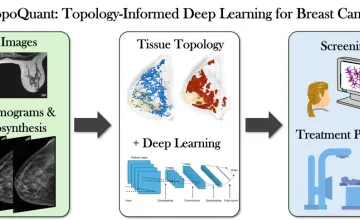AAU universities conduct a majority of the federally funded university research that contributes to our economic competitiveness, health and well-being, and national security. AAU universities are growing our economy through invention and innovation while preparing the next generation of scientists and engineers for global leadership. By moving research into the marketplace AAU universities are helping to create jobs, and provide society with new medicines and technologies.

UMD geologists uncovered evidence of a section of seafloor that sank into the Earth's mantle when dinosaurs roamed the Earth; it's located off the west coast of South America in a zone known as the East Pacific Rise.

Novel research supported by NCI could lead to more specific predictive disease models

A new University of Kansas study reveals parents seeking health care information for their children trust AI more than health care professionals when the author is unknown, and parents rate AI generated text as credible, moral and trustworthy.

Hypertension and amyloid plaques can separately cause dementia. Having both increases a person’s odds of developing cognitive decline, a new study finds
Explore More: University Research
You can filter stories by the university.
A Michigan State University professor proposed a point-of-care diagnostic platform that uses either nanoparticles or magnetic levitation to diagnose infection and assess future risk.
The National Institutes of Health (NIH) has launched a much-anticipated Phase IIb clinical trial to evaluate whether the malaria drug hydroxychloroquine in combination with the antibiotic azithromycin can prevent hospitalization and death from COVID-19, the disease caused by the novel coronavirus 2019 or SARS-CoV-2.
Mathematical models — built on a foundation of calculus, statistics and probability theory — have been one of the driving forces behind policies, at least in Ohio, around the COVID-19 pandemic.
Patients silenced by COVID-19 now have a voice thanks to a new initiative at Stony Brook University Hospital (SBUH)
Children, teens and young adults are at greater risk for severe complications from COVID-19 than previously thought and those with underlying health conditions are at even greater risk, according to a study coauthored by a Rutgers researcher.
